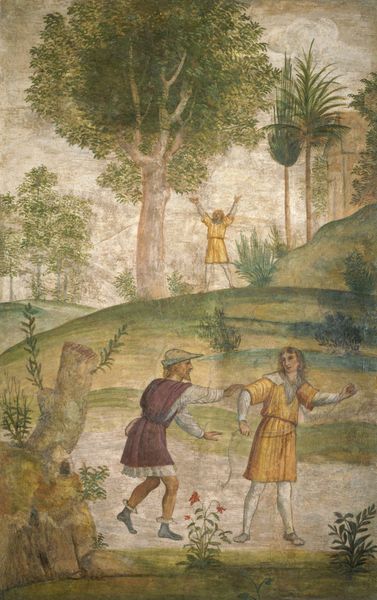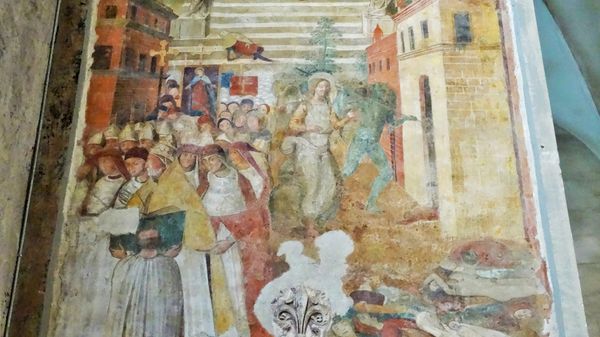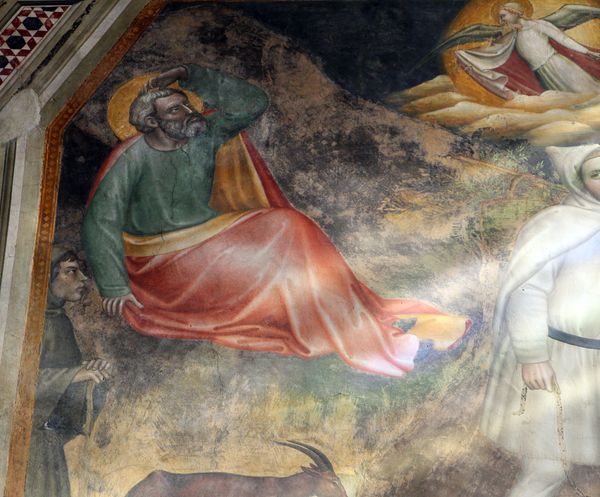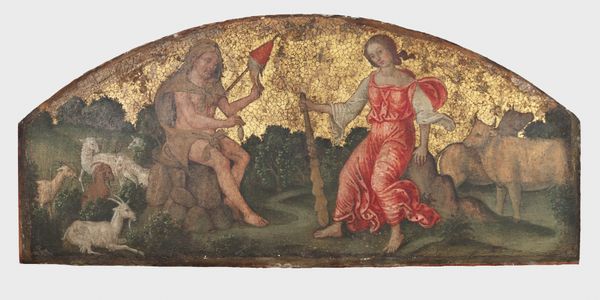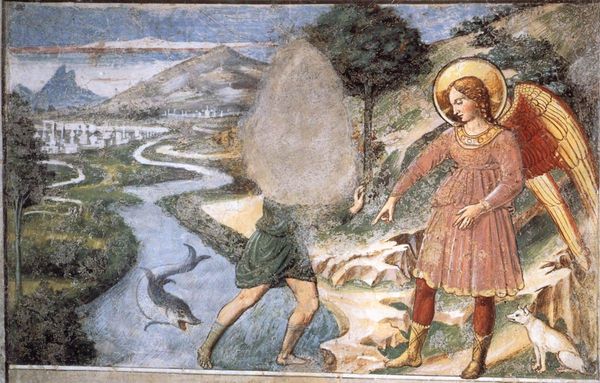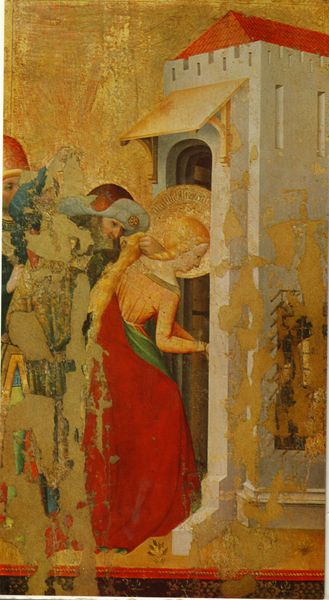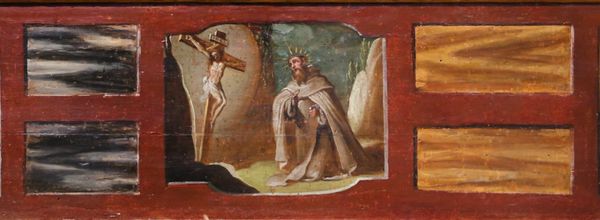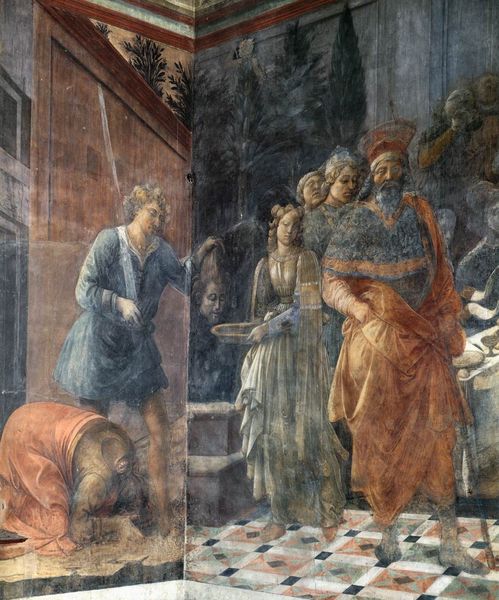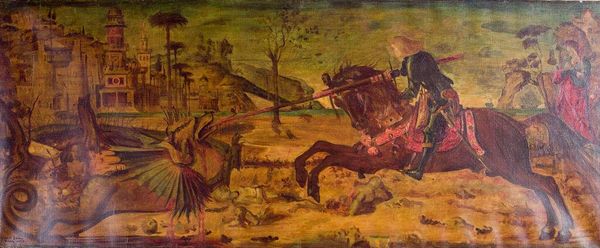
painting, fresco
#
narrative-art
#
painting
#
figuration
#
fresco
#
oil painting
#
genre-painting
#
italian-renaissance
Copyright: Public domain
This section of the "Processione di Sisto IV," painted by Antoniazzo Romano around 1481, is a fresco, meaning the artist applied pigment to wet plaster. This was a popular process for wall decoration in the Renaissance. Notice how the damp plaster has influenced the final appearance, softening the colors and blurring details. This technique required the artist to work quickly and decisively. The materials themselves—ground pigments mixed with water—were relatively inexpensive, but the labor involved in preparing the plaster and executing the painting would have been considerable. Fresco painting demanded a high level of skill and physical effort. The artist, as a skilled tradesman, was contracted for his services. The fresco process was not just about decoration; it was about transforming humble materials into enduring images, imbuing the walls with stories and meaning. This melding of material, technique, and context reminds us that art is not just about aesthetics but also about the labor, skill, and social values embedded in the making process.
Comments
No comments
Be the first to comment and join the conversation on the ultimate creative platform.
